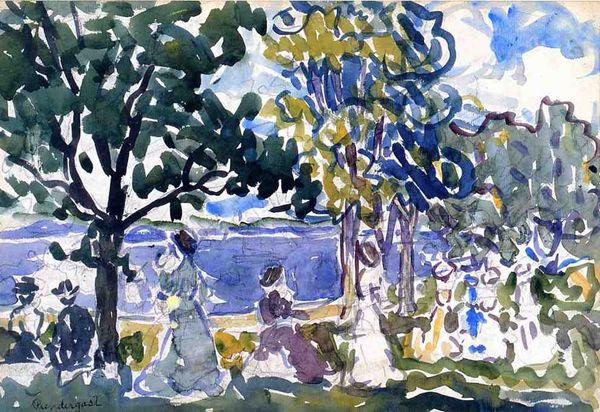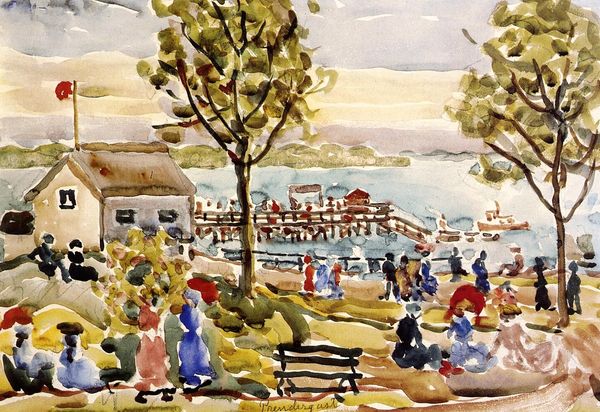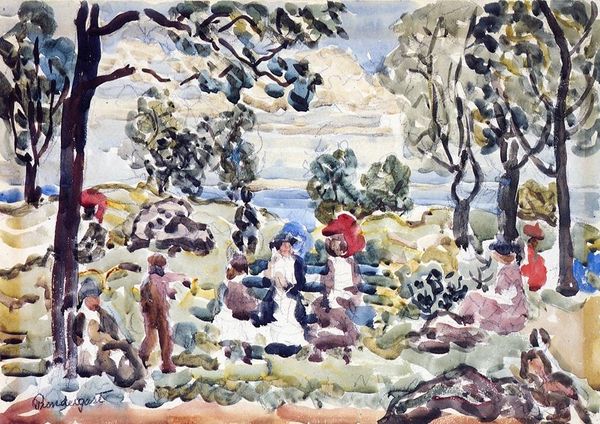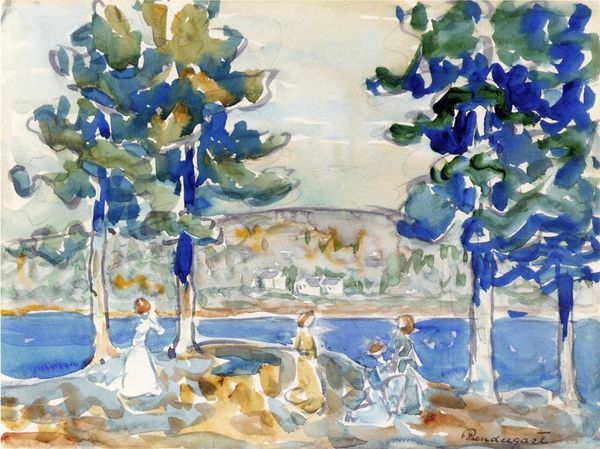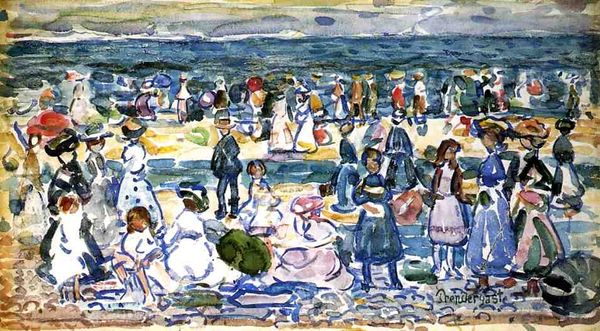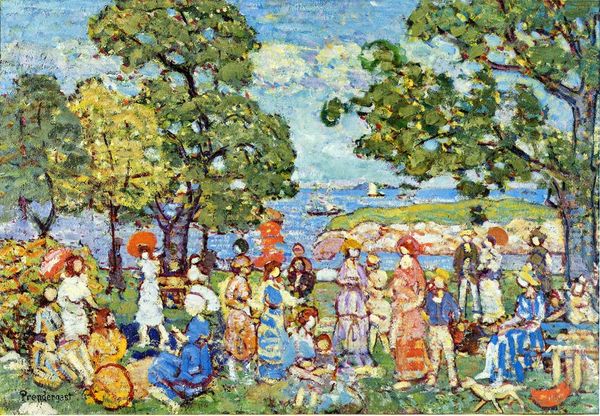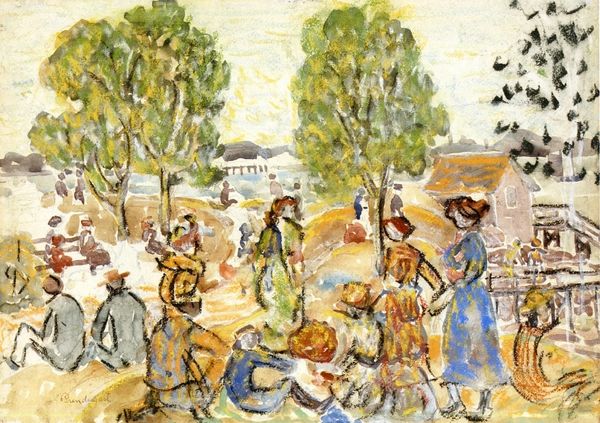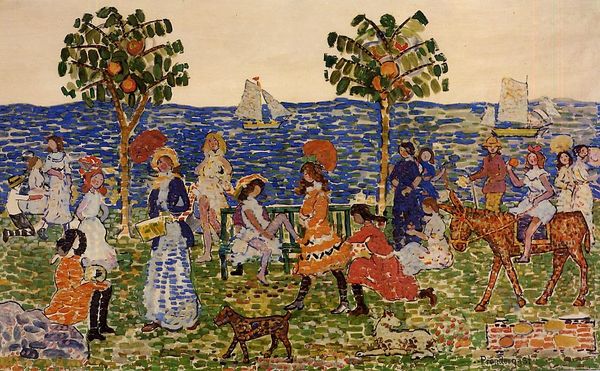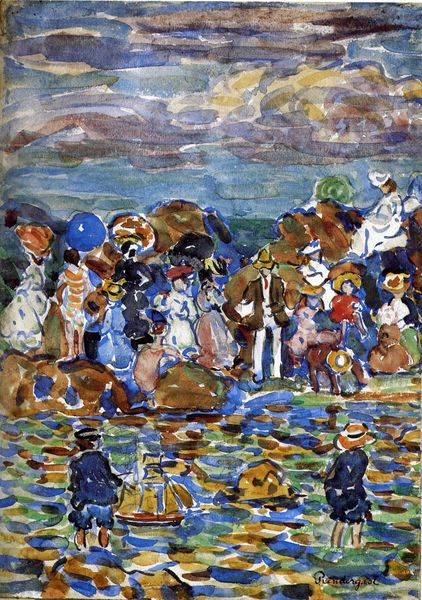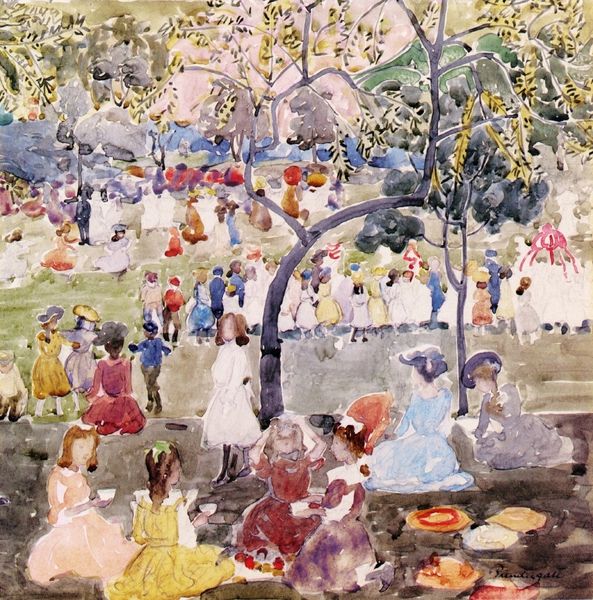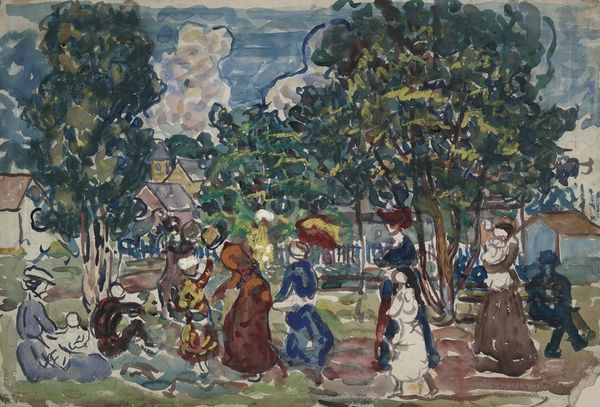
Dimensions: 34.29 x 48.9 cm
Copyright: Public domain
Editor: This is Maurice Prendergast’s "Salem Harbor No. 1," painted in 1923, using watercolor, it seems. The bright colors give the scene a lively, almost dreamlike quality. There's a definite sense of nostalgia in the air for me, almost like recalling a turn-of-the-century seaside vacation from childhood. What do you see in this piece? Curator: It's interesting you pick up on that sense of nostalgia. Prendergast, though associated with the Ashcan School for his urban scenes, often looked back to an imagined, more idyllic past. Notice how the figures, while distinct, are almost doll-like, lacking in strong individual characterization? This evokes a timeless quality, less about specific individuals and more about the collective memory of leisure and escape. What symbolic meaning do you see in that, considering the context of the Roaring Twenties? Editor: Well, perhaps it's a retreat from the rapidly changing modern world? The loose brushstrokes and almost hazy atmosphere soften the edges of reality. It feels intentional. Curator: Precisely. Consider how the harbor itself is rendered – a place of departure and arrival, of potential journeys. Water often symbolizes the subconscious, the fluid, and the transformative. The figures are positioned on the shore, the edge of this potential, caught between the known and the unknown. The park with promenading strollers and sunbathers suggests an almost allegorical sense of human society pausing between historical movements. Do you think Prendergast intended that with this subject matter and point of view? Editor: It does make one think about the nature of memory and how we construct these idealized scenes. Thanks! Curator: And thank you! Looking closer reveals layers of meaning, proving just how much images embed in culture and memory.
Comments
No comments
Be the first to comment and join the conversation on the ultimate creative platform.
